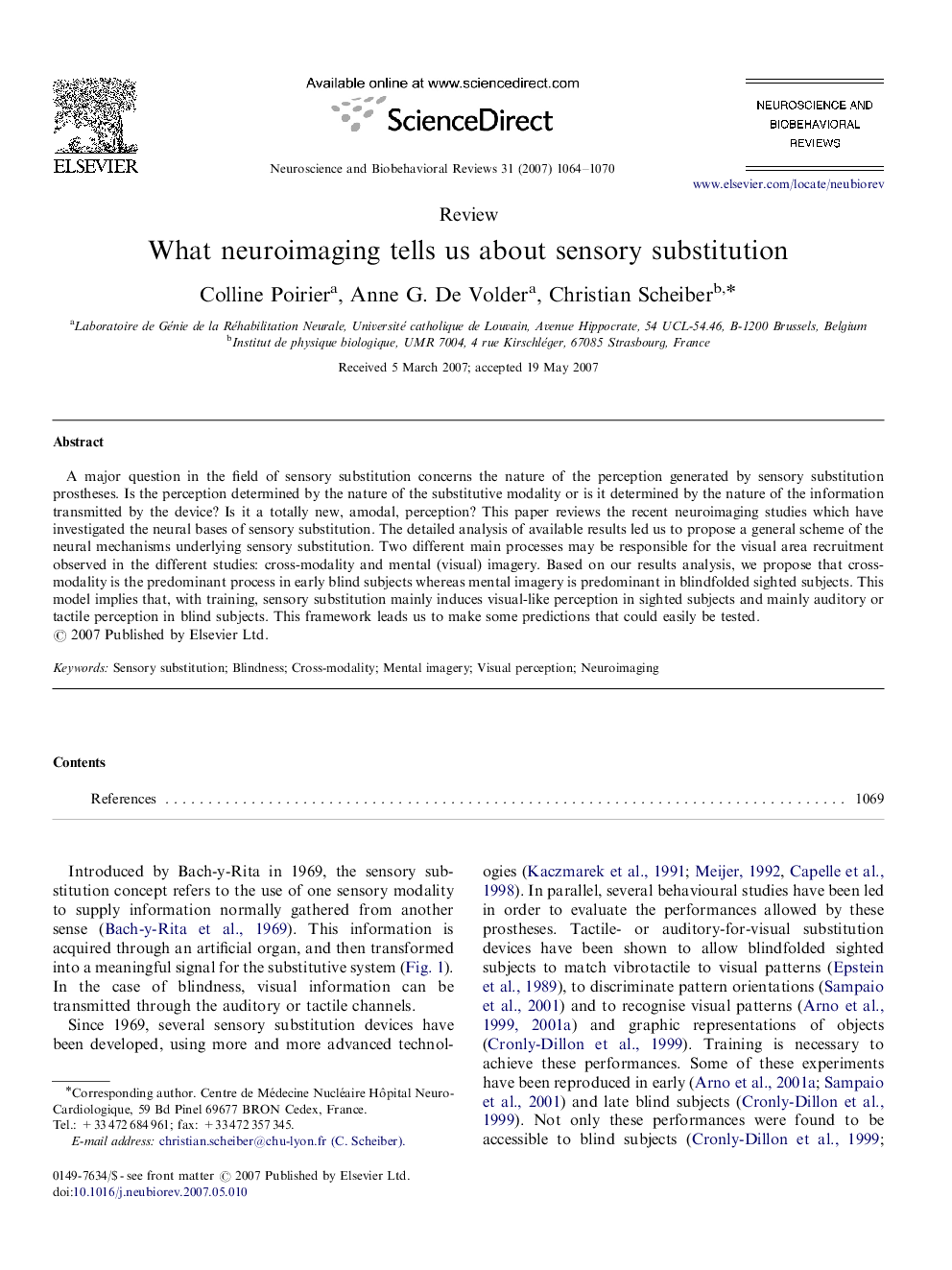| Article ID | Journal | Published Year | Pages | File Type |
|---|---|---|---|---|
| 938257 | Neuroscience & Biobehavioral Reviews | 2007 | 7 Pages |
A major question in the field of sensory substitution concerns the nature of the perception generated by sensory substitution prostheses. Is the perception determined by the nature of the substitutive modality or is it determined by the nature of the information transmitted by the device? Is it a totally new, amodal, perception? This paper reviews the recent neuroimaging studies which have investigated the neural bases of sensory substitution. The detailed analysis of available results led us to propose a general scheme of the neural mechanisms underlying sensory substitution. Two different main processes may be responsible for the visual area recruitment observed in the different studies: cross-modality and mental (visual) imagery. Based on our results analysis, we propose that cross-modality is the predominant process in early blind subjects whereas mental imagery is predominant in blindfolded sighted subjects. This model implies that, with training, sensory substitution mainly induces visual-like perception in sighted subjects and mainly auditory or tactile perception in blind subjects. This framework leads us to make some predictions that could easily be tested.
